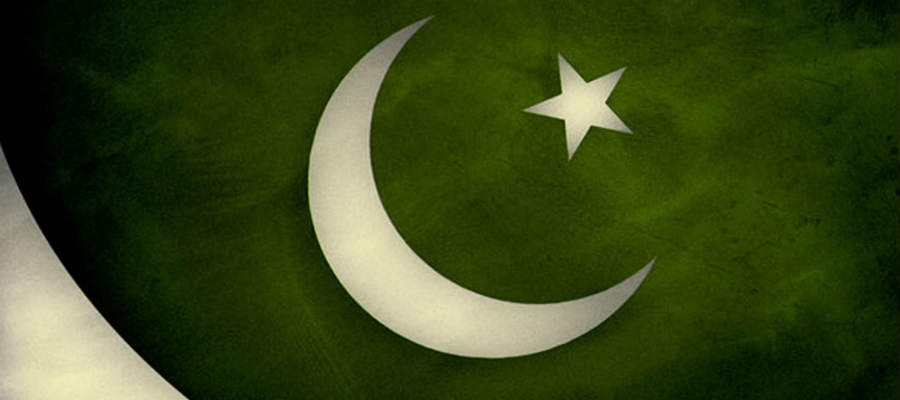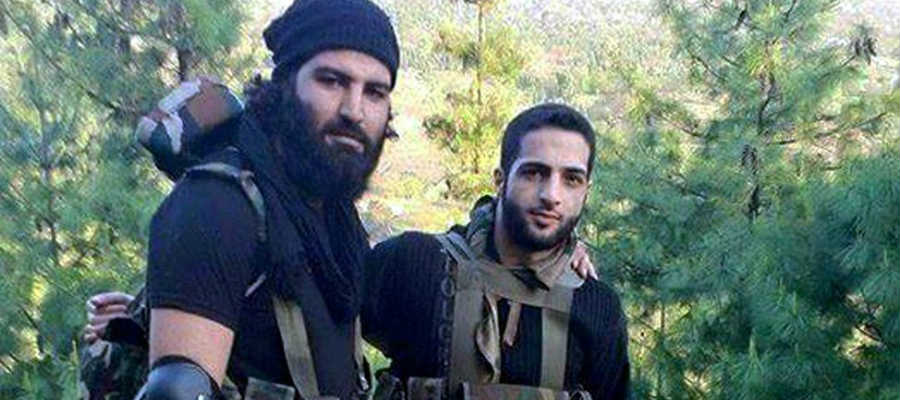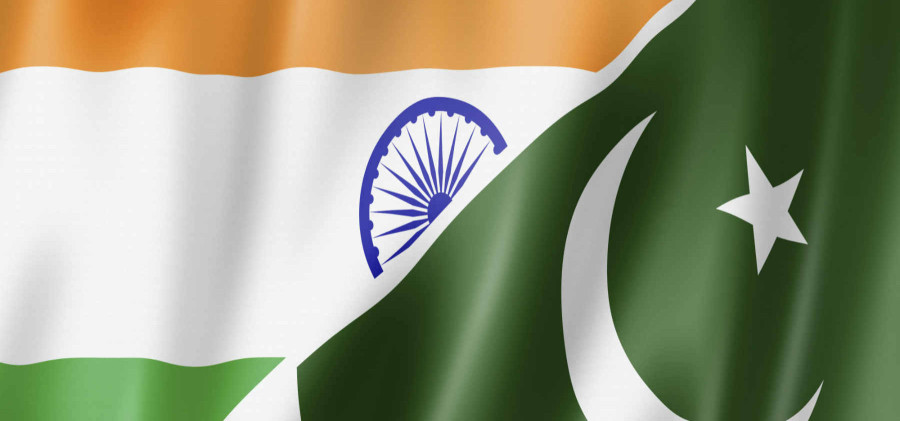BY RSN SINGH
Indians must be surprised at the sudden escalation between India and Pakistan on the Line of Control (LoC) and the International Border (IB). Many theories are being advanced for Pakistan’s provocation, most of them very simplistic. Most Indians have been inured to the vicissitudes of proxy war waged by Pakistan since 1947. It is increasingly becoming difficult to decide whether Pakistan was created as a homeland for Muslims or designed for proxy war by powers that be. This very form of warfare engineered by US-Pakistan combine engendered the end of Cold War. Pakistan has since been expanding the scope of proxy war.
Any flare-up between the two countries spawns host of ‘defence analysts’ on both sides of the border. The Pakistani self-declared analysts have no clue of the vitiated geopolitical environment created by Pakistan in its neighbourhood i.e Afghanistan and Iran and in the wider context Central Asia and South Asia. They reduce the debate to Kashmir with anti-Hindu overtones. The Indian self-declared ‘defence analysts’, euphemistically speaking, become fugitives when invited to participate in debates on India’s other neighbours. Maldives, the smallest and religiously most rapidly radicalizing country, gives them the biggest scare. They have absolutely no idea about the Pakistani footprints and machinations in Nepal, Bangladesh, Sri Lanka and Maldives, therefore, their geopolitical vision is also limited to Kashmir and the ‘military balance’ between the countries. The wider geopolitical and strategic discourse on Pakistan has become the exclusive preserve of the Western writers.
Sadly the images of Pakistan being fed to Indians are overwhelmingly sourced from Western media. This Indian tunneled vision has suited only the Western countries who have no qualms in selling arms to both India and Pakistan. Manipulation of India-Pakistan and India-China discourse is in the core interest of global arms suppliers. It is for this reason India-Pakistan Track II abroad are funded by Western sources. More than indigenization of arms industry, indigenization of threat calculation is therefore the crying need for India.
In the debates on India-Pakistan, there are voices of threat and caution. There are also elements exerting desperately to balance proxy war by Pakistan. Sharm-al-Sheikh and fabrication of Hindu terror are two glaring examples. No analyst in India has been able to explain that why Lashkar-e-Taiba, David Headley and some Indians were desperate to portray 26/11 as an act of Hindu terror. Say if an Indian David Headley had planned a terror attack on American soil, the US would have browbeaten India for his custody or not?
Recently, there were political voices which argued that ceasefire violations have been on increase under the new dispensation. They get away with these nonsensical observations without even specifying their notion of ‘cease-fire violation’ or the source or whether the comparison is with the preceding period or the corresponding period. The insinuation appears to be that the new government led by Prime Minister Narendra Modi has either been inviting ceasefire violations or has been too scared to punish Pakistan. It is the same constituency, which decried the new dispensation for calling off talks with Pakistan on the ‘issue of Hurriyat’. The decision was criticized on the specious imperative of ‘diplomatic maturity’. Their nervousness over the cancellation of talks is understandable, because it is this very constituency, and a formidable one, that had been using ‘talks with Pakistan’ as an oxygen to the seemingly eternal proxy war being inflicted on India. Too many vested interests had been created for perpetuating this unremitting aggression on India. These interests motivations can be financial or political inducements, or fallen prey to blackmail.
Many reasons can be ascribed for Pakistan’s recent bluster on the border, the foremost being India’s decision to cancel the official talks as long as terror persisted. This went against the very nature and method of proxy war. The package of proxy war inflicted by Pakistan on India comprises infiltration, militancy, terrorist attacks, subversion, sabotage, counterfeiting of Indian currency, hawala operations, drug trafficking, and destabilization activities from neighbouring countries. This entire chain has so far been punctuated with ‘talks’. Each official talk, each Track II meet has served as impetus to proxy war.
Use of irregulars and jihadis against India, as is generally believed, was not Zia’s brainwave. This has been part of Pakistan’s strategic thinking since its inception. In a review of the book, ‘Selected Works of Jawaharlal Nehru’ (1 May-31 July 1957, Second Series, Volume 38, edited by Mushirul Hasan), A G Noorani says that Jawaharlal Nehru had referred to a pamphlet written by the former Chief of General Staff of Pakistani Army in his address to the Cabinet’s Defence Committee meeting on the issue of the irregulars. Nehru had said: “There was the pamphlet issued by ex-Major General Akbar Khan, wherein he defined his line of action. This was to have large-sale sabotage within Jammu and Kashmir State and at the same time trouble along the ceasefire line and attempts to push large numbers of people across that line.”
Choosing a passage from a report by a senior official of Ayub Khan’s intelligence and research outfit, the Bureau of National Reconstruction entrusted with the task of identifying and recommending solutions to Pakistan’s security problems – Hussain Haqqani in his book ‘Pakistan between Mosque and Military’ quotes:
“In its manpower, Pakistan is very fortunate. In some of the regions people have long traditions of irregular fighting. Now, they have got a homeland and a State based on their ideology… Then, why not train irregular fighters…? Irregular warfare can help in spreading out prolonging action… Lack of military formalities in the eyes of military experts seems to detract from the respectability of irregular warfare. But actually, it is the lack of formal logic and system, which is making it increasingly important in the age of missile and nuclear weapons…”
Is it, therefore surprising that Pakistan has arrived at the equation: Proxy War = Nuclear Capability. It is the lack of military formality, which seduced the unsuspecting political leadership to fall prey to the ‘terror and talks’ cycle. But the real villains are professionals, who in service or post-retirement have been advocating this line. These are the subverted lot. Even 26/11 did not deter them.
By putting an end to the ‘terror and talk’ cycle, the new dispensation in India has rendered Pakistan’s proxy war strategy in disarray. The Pakistan military-intelligence establishment, therefore, felt that by displaying hostility on the borders it could compel the new government to ‘talks’ in order to perpetuate proxy war.
The spectrum of India-Pakistan conflict has proxy war and nuclear capability at the two ends. All along, military planners in Pakistan have derived unmitigated comfort in the fact that proxy war could be conducted in the shadow of nuclear capability, thus obviating conventional conflict. India’s superiority in manpower, tanks, submarines and air power has been to them of no consequence. India’s existing nuclear doctrine did not deter them from waging low intensity conflict or proxy war or sub-conventional conflict. The new government, it is learnt, has now decided to address the three points of conflict spectrum, i.e. proxy war, conventional warfare and appropriate nuclear doctrine, simultaneously. In other words, India has decided to comprehensively neutralize Pakistan’s proxy package with its own package.
In the last few months, it has clearly emerged, that the military-intelligence establishment of Pakistan is desperate to see the last of Nawaz Sharif. It has used various means to undermine his position. There has been acrimony between the two over military action against Pakistan-Taliban(TTP). Nawaz Sharif and his brother Shahbaz Sharif, the Chief Minister of Punjab (Pakistan), are known to have political conduits to the TTP. Even more intractable is the differences between Nawaz Sharif and the military over treatment to Musharraf. With regard to Musharraf, the Pakistan Army has categorically indicated that under no circumstances he is to be held accountable for the coup in 1999. This goes against the very grain of the Pakistan Army. It may be mentioned that every coup by the Pakistan Army has been upheld by the judiciary on the basis of ‘doctrine of state necessity’. It is also pertinent to note that all coups in Pakistan have been bloodless. Therefore, Musharraf is not viewed as much of a villain. On October 06, 2014, Musharraf popped out of nowhere to issue a warning to Indian Army that India should stop testing the Pakistani Army’s ‘patience and resolve’. The resurgence of Musharraf is believed because of the robust backing from the Pakistan Army. General Raheel Sharif, the Pakistan Army Chief, is considered to be a protégé of Musharraf.
There are also reports to suggest that there have been differences between Nawaz Sharif and the Pakistan Military over nuclear warheads earmarked for Saudi Arabia. The significant increase in the number of warheads of Pakistan’s nuclear arsenal, as reported by western sources, is attributed to the Saudi demand, which had overwhelmingly financed Pakistan’s nuclear programme. Nawaz Sharif, is known to enjoy excellent rapport with the Saudi dispensation, as he spent his period in exile in that country. Saudi Arabia enjoys formidable financial and religious leverages over Pakistan.
The Pakistan military is also not too happy with Sharif for his policy on India and Afghanistan, due to which it reckons that Pakistan’s strategic space has much diminished and proxy war in the two countries is suffering. The Pakistan military-intelligence establishment attacked the Indian Consulate at Herat, when Sharif was in the Indian soil to attend Modi’s swearing-in ceremony. When this failed, and Sharif survived politically, the military-intelligence establishment attempted a soft coup by unleashing Imran Khan and Qadri. Again failing to dislodge him, the military-intelligence establishment activated the Indian LoC and IB, with twin objectives of escalating the situation to a point where Nawaz Sharif becomes untenable and at the same time Indian dispensation pleads for ‘talks’. The swift and massive response by the Indian Forces put paid to the misconception of the Pakistan Military with regard to the resolve of India. This misconception for some years has been nurtured by vested interests within India as well.
India, therefore, cannot allow itself to be a victim of the internal dynamics of a country, which is the epicenter of terrorism, and hovers between ‘failed state’ and ‘a failing state’.
Many analysts considered the Kargil War to be the apotheosis of low intensity conflict waged by Pakistan. Its refusal to accept dead bodies of soldiers reflected the degeneration of Pakistan Army from its overt institutional status to a covert bigoted and mercenary instrument of politics and war. Kargil was hardly the apotheosis and the slide of degeneration has continued. It acquired the form of 26/11 and now the ‘ceasefire violations’. Self-declared defence analysts, therefore need to consider the multi-faceted, manifest and non-manifest dimensions of the proxy war perpetrated by Pakistan. The perpetrators are in Pakistan but the proxies in diverse forms are in India. Pakistan is more than a military challenge.
(RSN Singh is a former military intelligence officer who later served in the Research & Analysis Wing. The author of two books: Asian Strategic and Military Perspective and Military Factor in Pakistan, he is also a Guest Blogger with Canary Trap. The opinions expressed by the author and those providing comments are theirs alone, and do not reflect the opinions of Canary Trap or any employee thereof)


